Products
Your all-inclusive solution
All Products
Download our catalog
Get our Catalog
Applications
The fastest EMCCD technology available, with a multiple-output sensor pushing the limits of low-light imaging speeds.
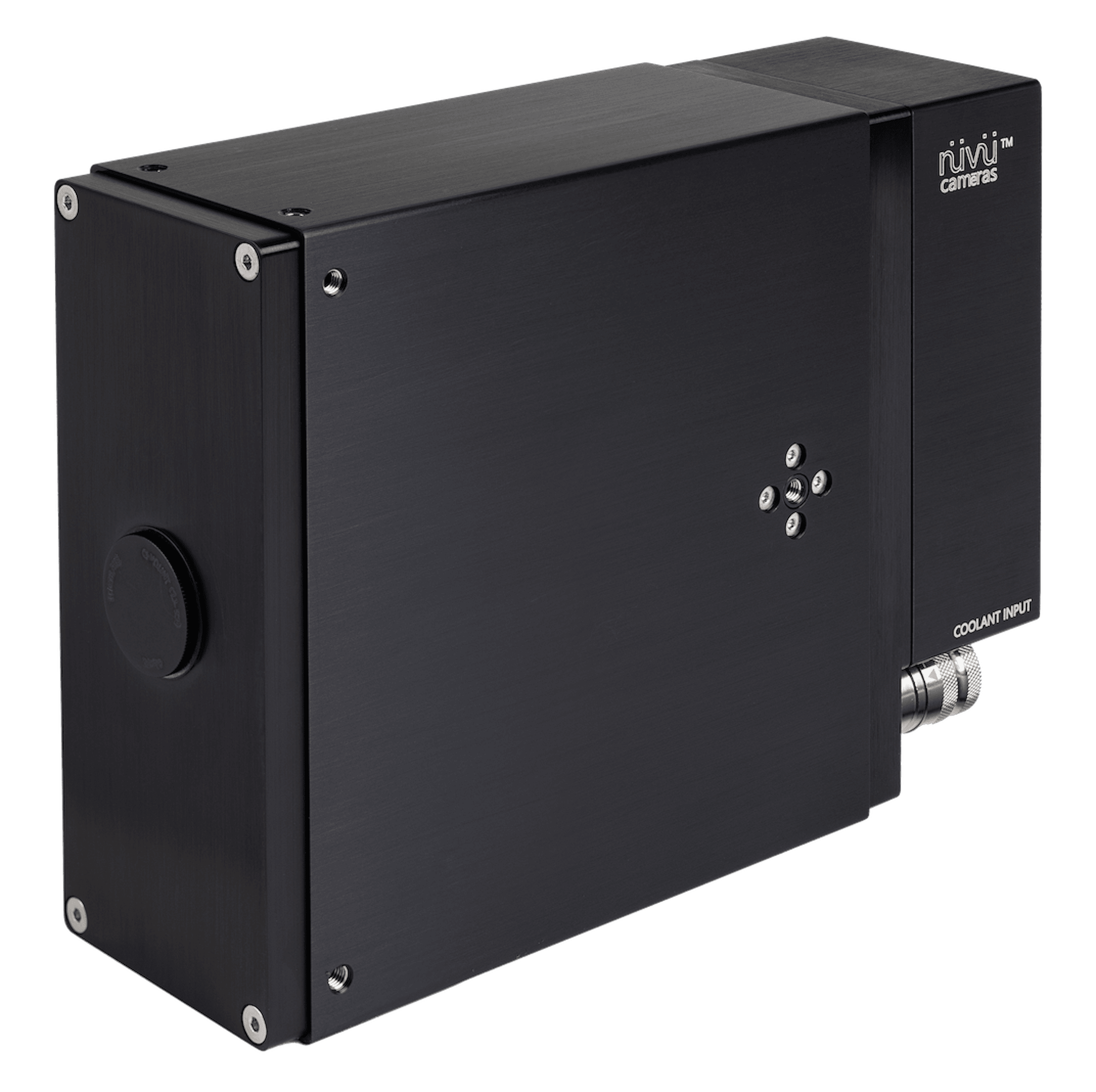
The HNü 240 camera is optimized for Adaptive Optics (AO), providing the high frame rates necessary to outpace atmospheric distortion with the 240 x 240 pixels resolution critical to focal plane wavefront sensing and direct exoplanets imaging. The HNü 240 exceeds expectations, with unmatched sensitivity thanks to Nüvü’s signature CCD Controller for Counting Photons. It is the finest camera for your next great space discovery.
The goals of current and upcoming large telescopes require the highest level of AO performance. This, in turn, is driving demand for sensitive wavefront sensors that not only detect higher-order aberrations with a limited number of photons but also run at higher frame rates to outpace the changing atmosphere. To address these requirements, the HNü 240 camera delivers a full-detector frame rate of up to three thousand frames per second with sub-electron read noise and flexible readout sequences that can be tailored to different wavefront sensor designs.
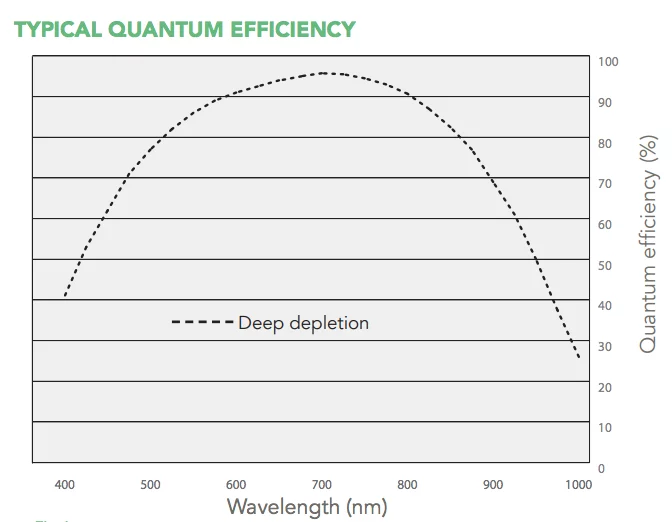
The HNü 240 integrates a high QE (up to 95%) on a wide spectral bandwidth due to a state-of-the-art deep-depletion silicon EMCCD sensor. Coupled with Nüvü’s patented electronics for the lowest background noise and the highest EM gain, this HNü 240 camera is ideal for ultra-fast imaging in photon-counting conditions.
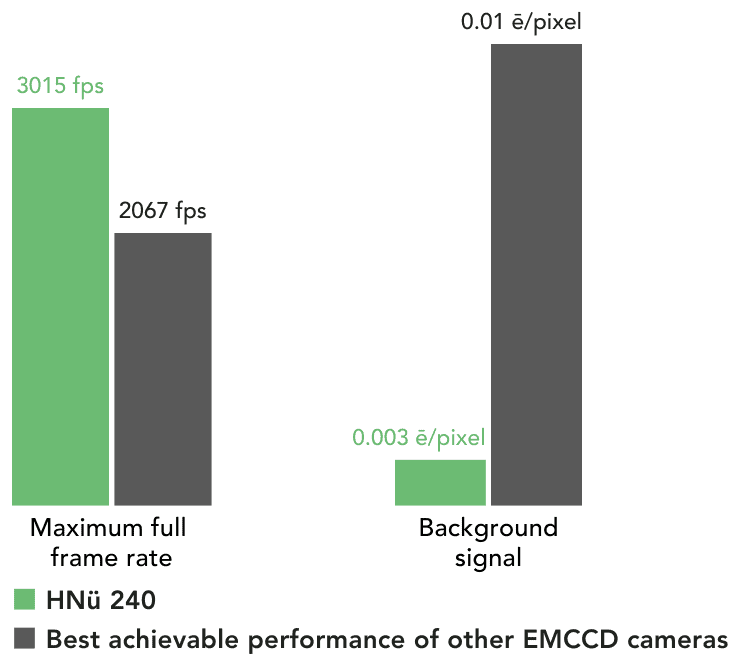
Thanks to Nüvü’s CCD Controller for Counting Photons, less clock-induced charges (CIC) are generated, the dominant source of noise in low-light EMCCD imaging, providing to the HNü 240 camera at least 3x less noise than other cameras using the same detector whilst operating at a 50% higher readout rate for unmatched imaging speeds.
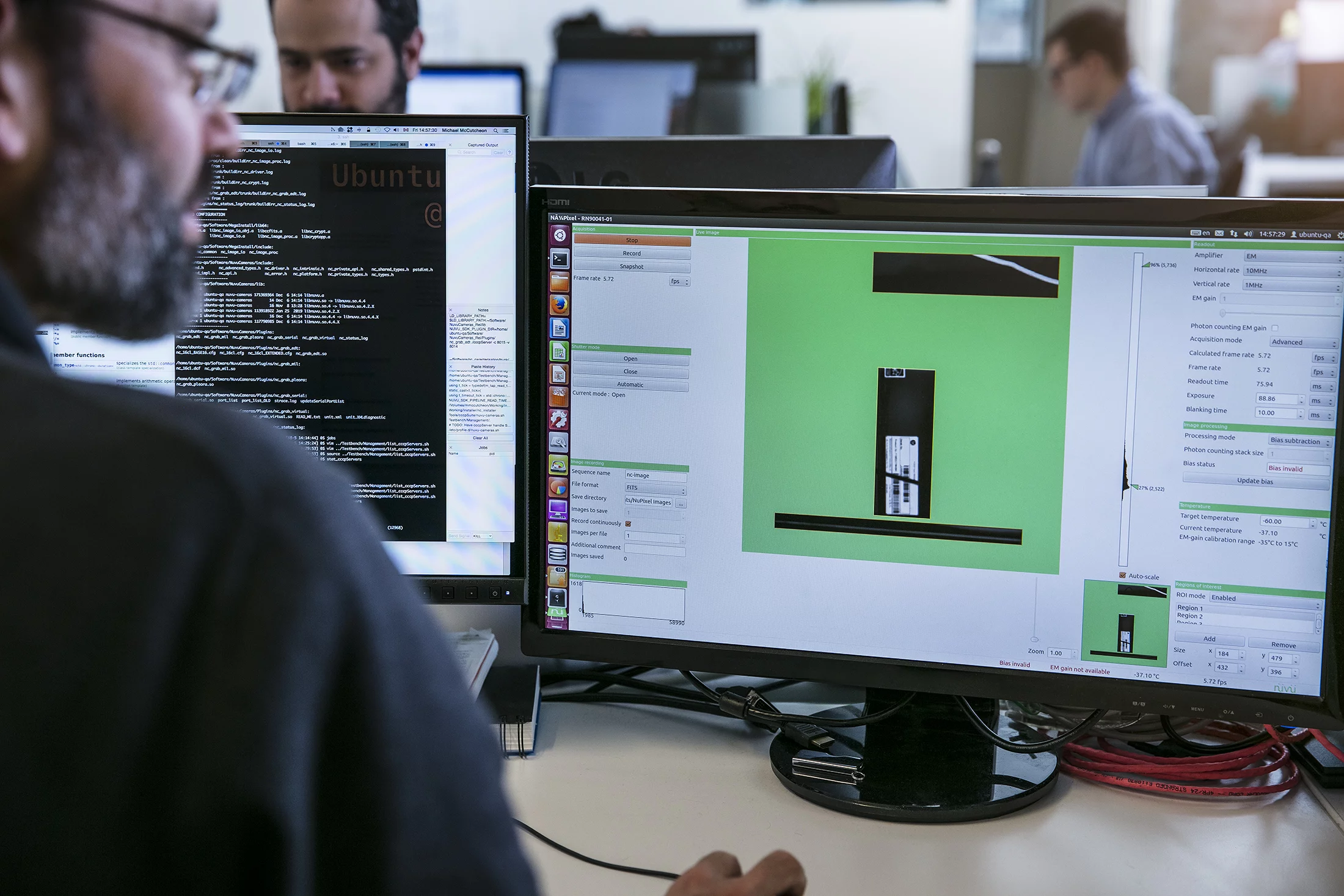
The user-friendly HNü 240 camera provides many advantages to efficiently bridge the gaps between purchase, setup and discoveries.
The HNü 240 camera is a compact and easy-to-use device with a Windows or Linux operating system. To allow quick and easy integration into any system, all standard HNü cameras come with a C-mount optical interface, imperial and metric mechanical holes on the sides. For fast and reliable image data transmission, the HNü 240 camera communication interface are either 10 Gigabit Ethernet or Camera Link Extended Full.
Further customize the camera to your requirements for improved performances in your measurement contexts and increased versatility. A variety of options are available.
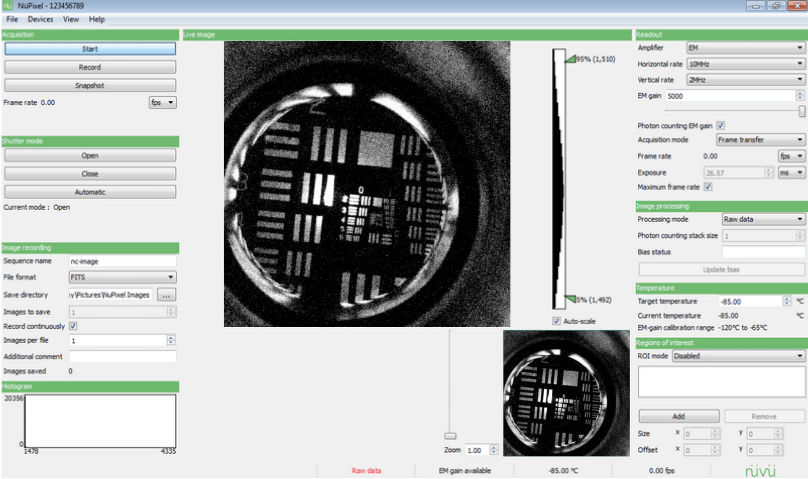
NüPixel control, acquisition and analysis software
Software development kit (SDK) for customizable programming
Windows & Linux compatibility
Worldwide professional customer support
In addition to an intuitive user manual for the easy installation and use of our products, Nüvü Camēras offers international on-site training as well as complete consulting services. Our team’s passion is the development of the ultra low-light imaging field; as such, we provide a variety of services to efficiently minimize the delay between purchase and discoveries.
Nüvü Camēras is a Canadian company specialized in designing and manufacturing novel EMCCD cameras for fields where the drive for cutting edge instrumentation propels innovation. We improve imaging performance for a number of fields including biomedical research, astronomy, photonics and more. As such, our cameras benefit from extended warranty policies. Basic warranty is 1 year on all parts and labor (subject to the terms and conditions expressed in the respective products’ user manuals).
Extended warranty options also available.
As stated in its name, Nüvü Camēras’ proprietary CCD Controller for Counting Photons was purposely designed for photon-counting imaging. As such, no noise-filtering algorithms are used. The amount of noise generated is simply lower, eliminating the risk of removing genuine photoelectrons.
Resorting to arbitrary clocks rather than regular square clocks to shift the electrons through the EMCCD, the CCCP clamps down the generation of clock-induced charges and significantly reduced the detector’s total background noise. Consequently, the EMCCD ability to discriminate single-photon events is considerably increased, and the camera can effectively operate in photon-counting mode as long as the background noise is low.
In extreme cases where the expected intensity is about a single photon per pixel per second or even less, the photon counting (PC) mode is the ideal solution to obtain high-quality images. By eliminating the excess noise factor (ENF) and using a statistically significant threshold, pixels are individually analyzed to determine whether or not they truly detected a photon despite various noise sources.
Displayed below are images of extremely dim light sources — low concentration bioluminescent samples — and illustrate the power of photon-counting imaging in such conditions. All figures are courtesy of the Université de Sherbrooke Hospital Centre.
The darkest EMCCD cameras are manufactured by Nüvü Camēras. The secret? The CCD Controller for Counting Photons (CCCP), an innovative technology that virtually suppresses clock-induced charges (CIC), and a cooling Peltier unit integrated into an ingenious packaging. The thermoelectrically cooled HNü camera operates between -60 and -90°C with outstanding precision to optimize CIC and dark current to their ground level. The images below illustrate the accumulation of dark current when the shutter is closed. The darker the image, the less noise is present.
Acquisition conditions: -85 °C cooling, 10MHz readout speed, EM gain of 5000 for Nüvü Camēras, and 1000 for other EMCCD manufacturers.
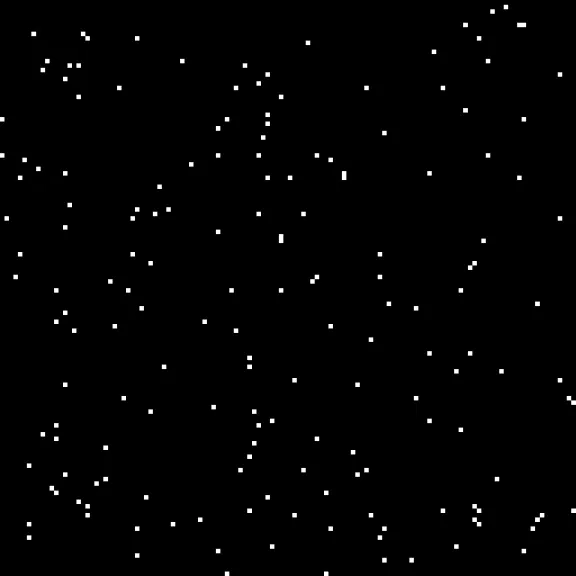
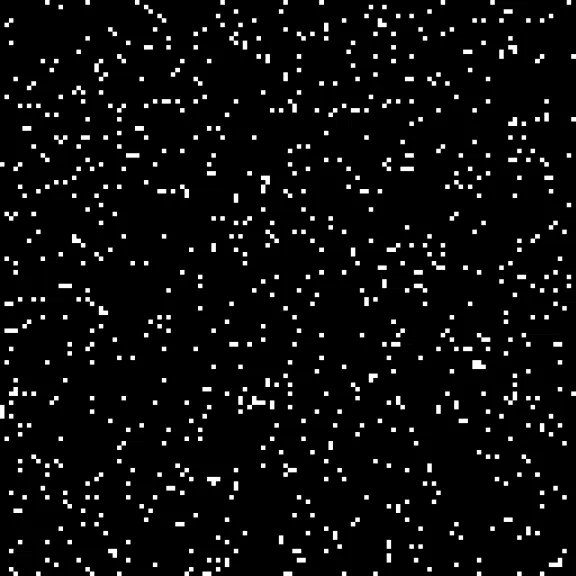
At high readout speeds, the electron transfer from one potential well to the next may be incomplete, leaving a few charges behind. Consequently, the leftover electrons artificially increase the brightness of certain pixels, thereby diminishing the overall image quality with the addition of arbitrary blurry spots. However, Nüvü Camēras’ CCCP preserves charge transfer efficiency (CTE), even at low operating temperature and increased EM gain, while decreasing CIC, yielding highly superior image quality.
Acquisition conditions: -85 °C cooling, 10MHz readout speed, EM gain of 5000 for Nüvü Camēras, and 1000 for other EMCCDs.
As stated in its name, Nüvü Camēras’ proprietary CCD Controller for Counting Photons was purposely designed for photon-counting imaging. As such, no noise-filtering algorithms are used. The amount of noise generated is simply lower, eliminating the risk of removing genuine photoelectrons.
Resorting to arbitrary clocks rather than regular square clocks to shift the electrons through the EMCCD, the CCCP clamps down the generation of clock-induced charges and significantly reduced the detector’s total background noise. Consequently, the EMCCD ability to discriminate single-photon events is considerably increased, and the camera can effectively operate in photon-counting mode as long as the background noise is low.
In extreme cases where the expected intensity is about a single photon per pixel per second or even less, the photon counting (PC) mode is the ideal solution to obtain high-quality images. By eliminating the excess noise factor (ENF) and using a statistically significant threshold, pixels are individually analyzed to determine whether or not they truly detected a photon despite various noise sources.
Displayed below are images of extremely dim light sources — low concentration bioluminescent samples — and illustrate the power of photon-counting imaging in such conditions. All figures are courtesy of the Université de Sherbrooke Hospital Centre.
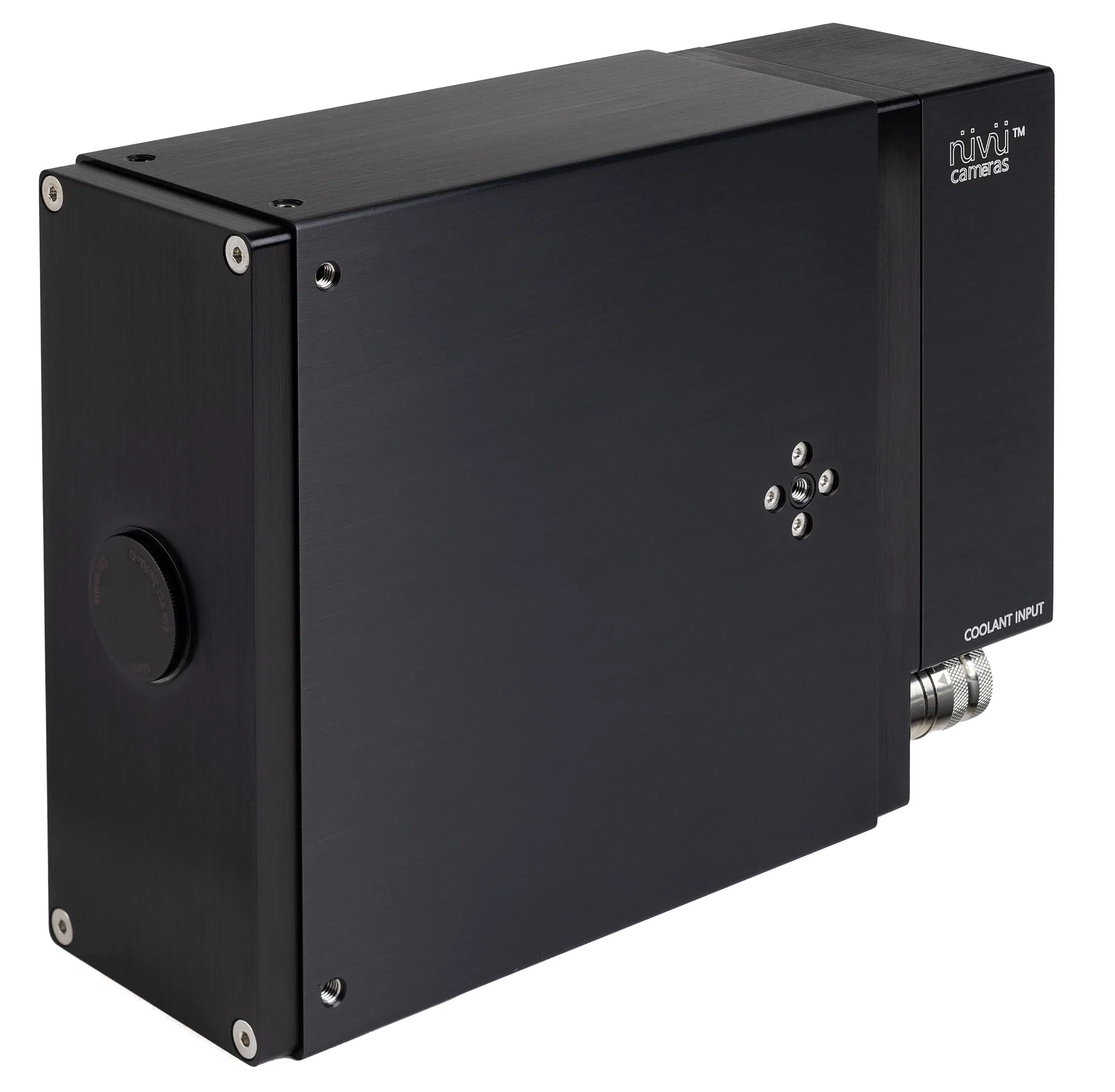

Single 30 seconds acquisition in conventional (CCD) mode. No details are visible where we should have seen several bioluminescent ATP samples.
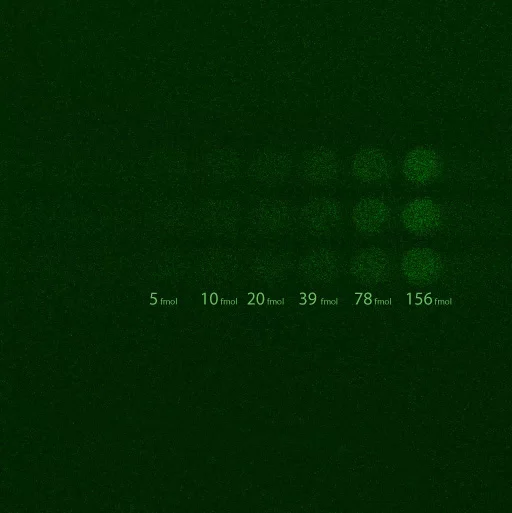
Applying electron multiplication to suppress the readout noise reveals the bioluminescent ATP samples in 5 seconds. As such, all six ATP concentrations are detectable with SNR values varying from 1.9 to 14.1 (or, equivalently, 2.8 dB to 11.5 dB).
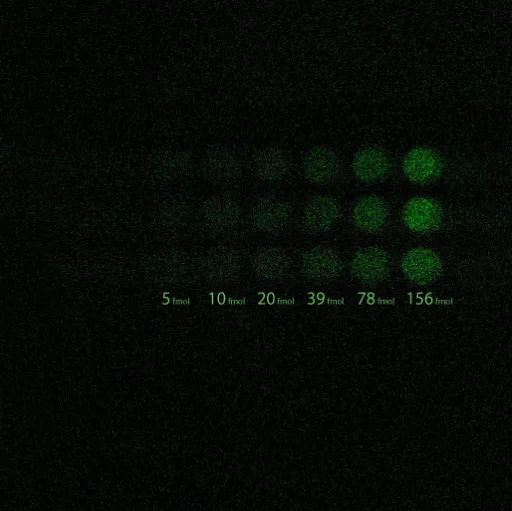
Photon counting mode with an EMCCD increases the contrast of all ATP samples by suppressing the excess noise factor (ENF), thus allowing considerable improvements in image quality. The SNR increases from 6.6 to 51.3 (equivalent to a range of 8.2 dB to 17.1 dB).
Any questions about EMCCD or low light imaging? Nüvü Camēras experts can provide advices on your low light imaging options.